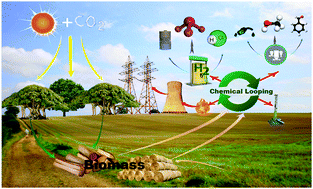Biomass-based chemical looping technologies: the good, the bad and the future
Abstract
Biomass is a promising renewable energy resource despite its low energy density, high moisture content and complex ash components. The use of biomass in energy production is considered to be approximately carbon neutral, and if it is combined with carbon capture technology, the overall energy conversion may even be negative in terms of net CO2 emission, which is known as BECCS (bioenergy with carbon capture and storage). The initial development of BECCS technologies often proposes the installation of a CO2 capture unit downstream of the conventional thermochemical conversion processes, which comprise combustion, pyrolysis or gasification. Although these approaches would benefit from the adaptation of already well developed energy conversion processes and CO2 capture technologies, they are limited in terms of materials and energy integration as well as systems engineering, which could lead to truly disruptive technologies for BECCS. Recently, a new generation of transformative energy conversion technologies including chemical looping have been developed. In particular, chemical looping employs solid looping materials and it uniquely allows inherent capture of CO2 during the conversion of fuels. In this review, the benefits, challenges, and prospects of biomass-based chemical looping technologies in various configurations have been discussed in-depth to provide important insight into the development of innovative BECCS technologies based on chemical looping.



 Please wait while we load your content...
Please wait while we load your content...